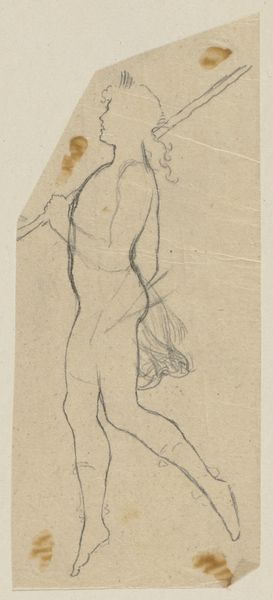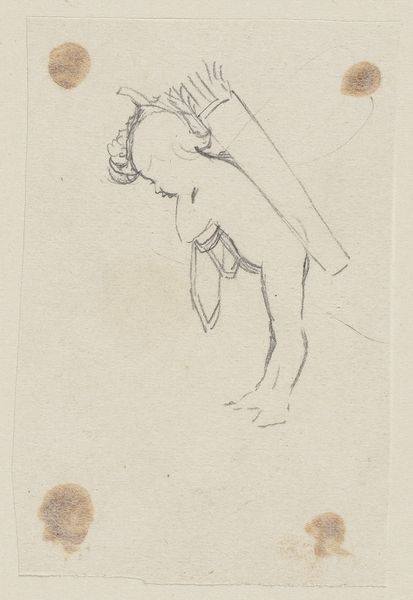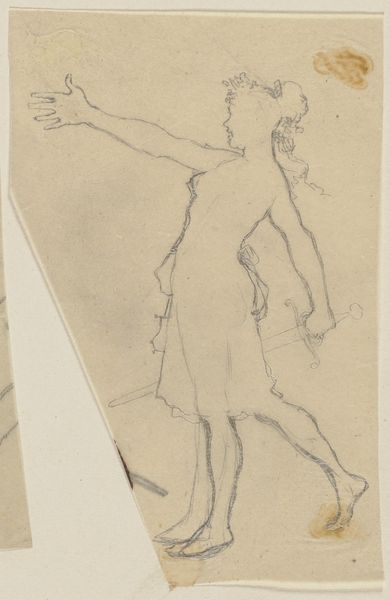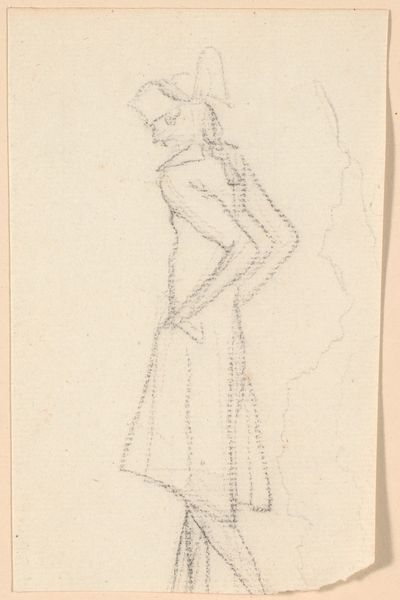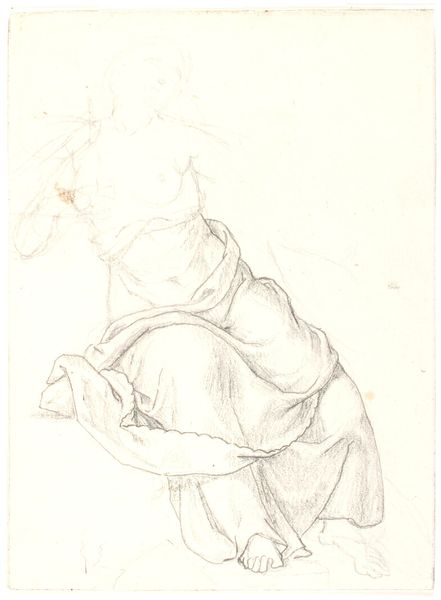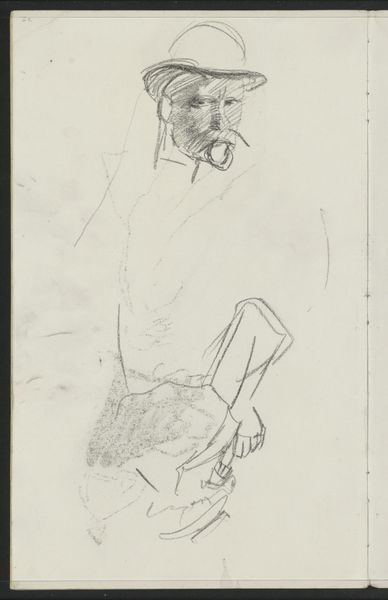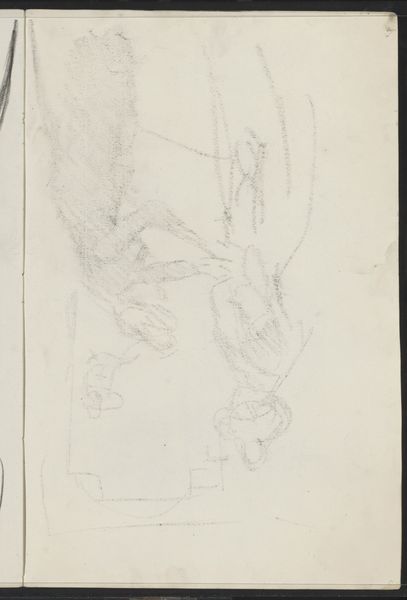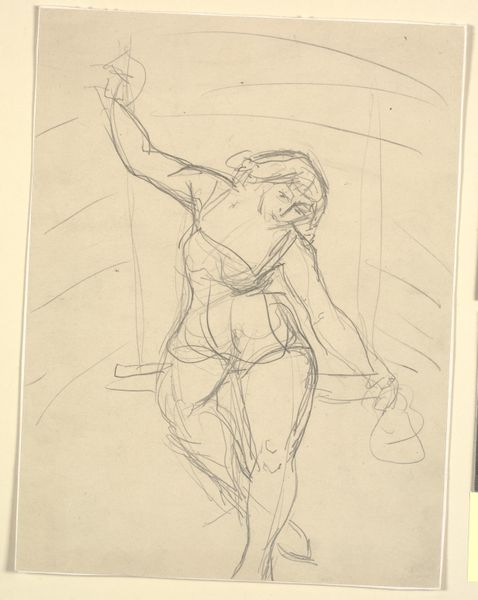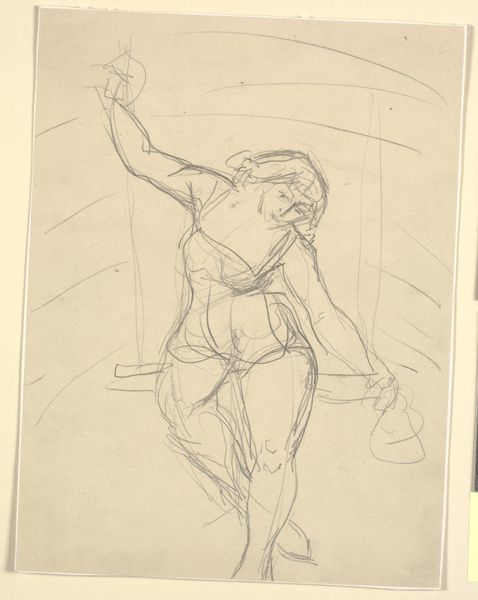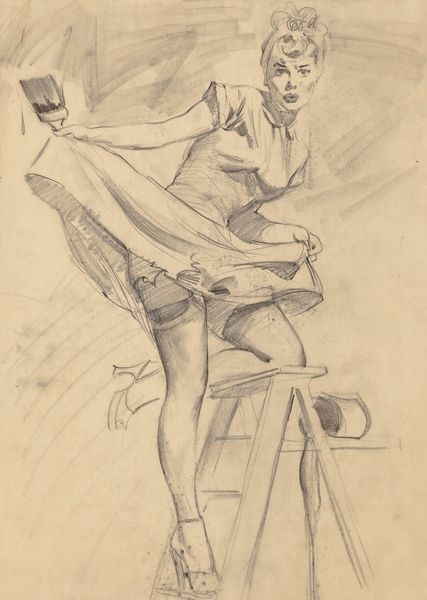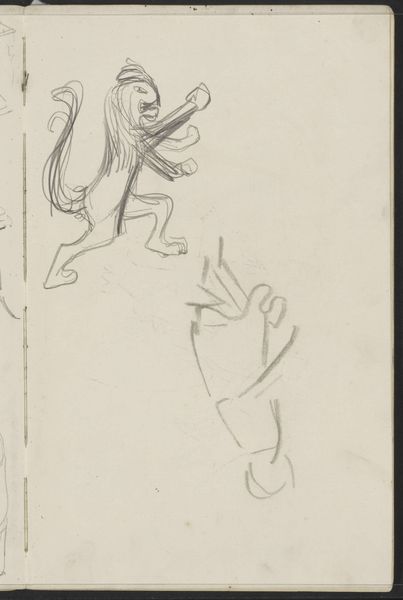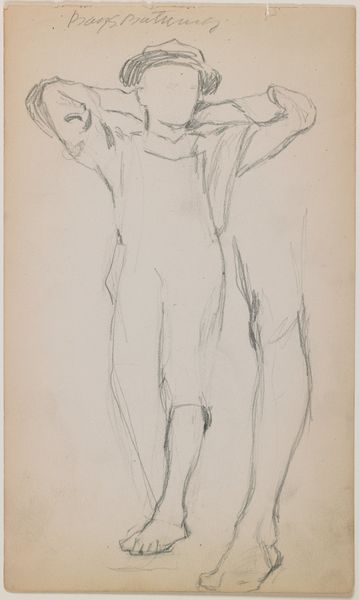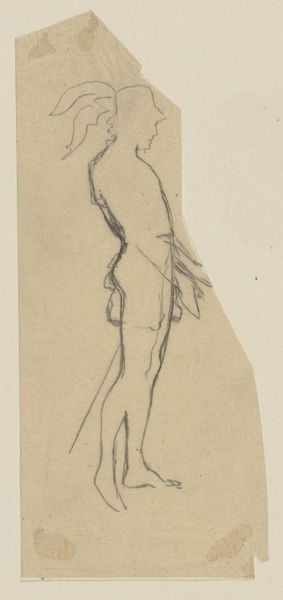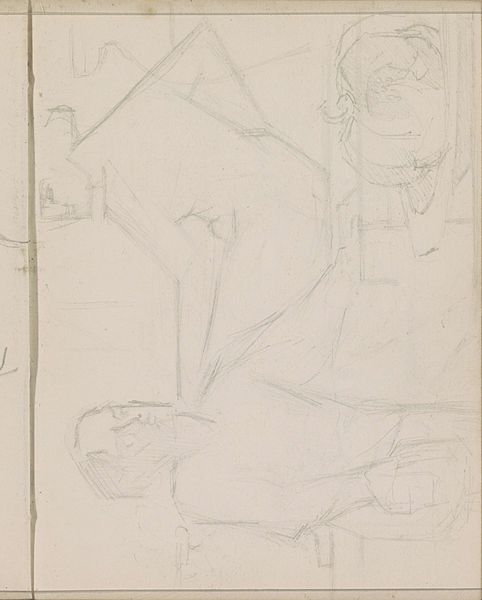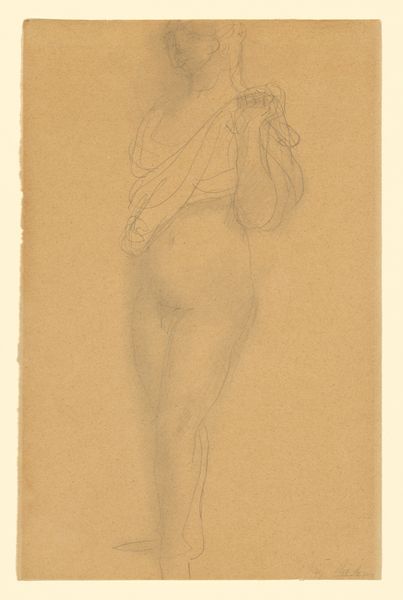
Siddende strikkende dame. Desuden to armstudier 1765 - 1833
0:00
0:00
drawing, pencil
#
portrait
#
drawing
#
figuration
#
pencil
#
academic-art
Dimensions: 190 mm (height) x 166 mm (width) (bladmaal)
Curator: This pencil drawing, entitled "Siddende strikkende dame. Desuden to armstudier," translates to "Seated Knitting Lady, plus Two Arm Studies". It's attributed to Gerhard Ludvig Lahde and believed to have been created between 1765 and 1833. Currently, it resides at the SMK, the National Gallery of Denmark. Editor: It’s such a simple composition, but something about the downward gaze of the figure evokes a profound sense of quietude, almost melancholy. The rendering is incredibly detailed in areas, like her cuffs, but much looser elsewhere. It's intriguing. Curator: What interests me here is not simply the depiction of a woman, but rather the raw depiction of the labor that defines her social standing. The inclusion of separate arm studies speaks to the technical process of achieving accurate depiction of this labor—knitting. It really pulls into focus the way the body is almost instrumentalized by the repetitive work, made anonymous, even. Editor: Absolutely, the studies add another layer. You almost feel the repetition ingrained within her being. Consider the expectations placed on women of this period to be both producers and reproducers, a double bind further complicated by societal pressures regarding class and appropriate forms of feminine labor. It's not just an innocent hobby. Curator: Precisely! And if we consider the physical act of knitting – the yarn itself, often wool or flax, and the production processes necessary, the textile industries, the global networks it represents… suddenly this unassuming drawing becomes a nexus of socioeconomic forces! Lahde doesn't offer romanticism; instead we have direct engagement with material conditions. Editor: Yet, through all this material grounding, there’s still a sensitivity. Note how the studies capture nuances in hand positioning— almost as though it strives towards imbuing each sketch with a sense of individuality, reclaiming identity through detail in the hands—hands that produced. And if she’s knitting, is it for practical needs or for the market? Is it paid work? The drawing becomes so many questions about her role. Curator: Questions that, by foregrounding the materiality of art making itself, challenge those divisions between 'high art' portraiture and functional illustration. And it certainly complicates any singular reading of artistic "intention". It pushes art as itself an act interwoven in larger productive relationships. Editor: Seeing the sitter at work gives insight not only to past circumstances of women but opens up for discussion surrounding female working-class citizens. It is like unveiling layers through close attention—and these small choices illuminate broad issues relating to social justice. I will look differently at female artists' pieces now, to be sure. Curator: Yes, precisely, thinking about her life, her context; thinking of her materials. It’s been such an enlightening process.
Comments
No comments
Be the first to comment and join the conversation on the ultimate creative platform.
